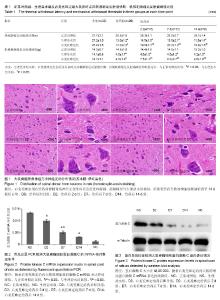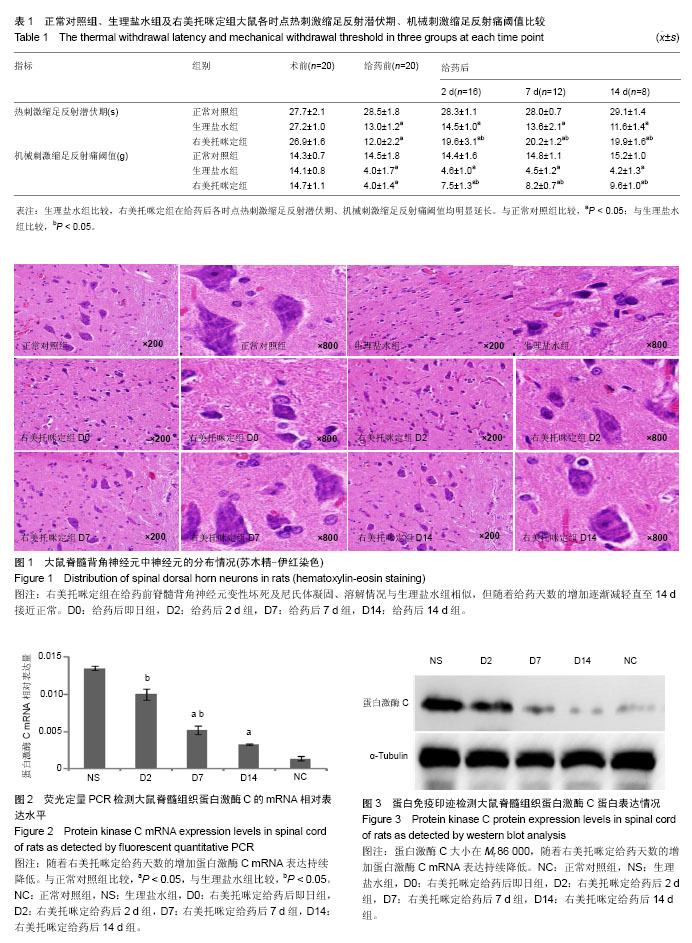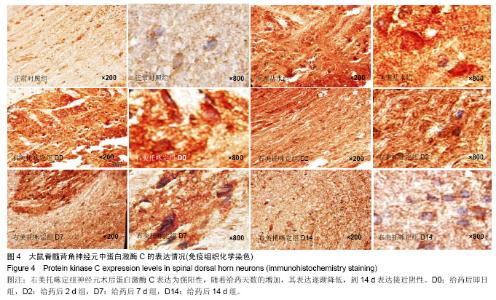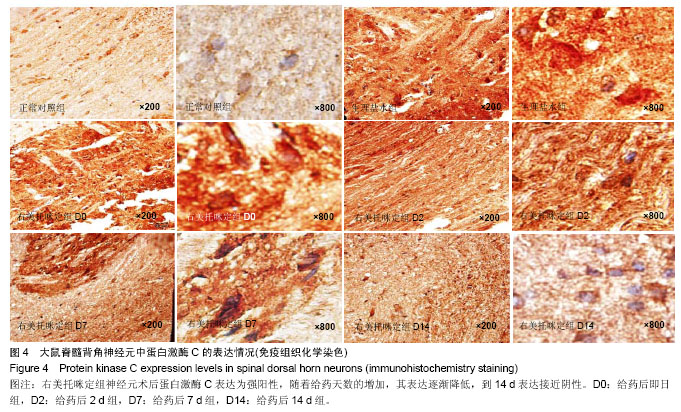| [1] 李琦,曾炳芳,王金武.神经病理性疼痛研究进展[J].中国疼痛医学杂志,2007,13,(4):244-246.
[2] Wilson M. Overcoming the challenges of neuropathic pain. Nursing standard. 2002;16(33):47-53.
[3] Trujillo KA, Akil H.Inhibition of morphine tolerance and dependence by the NMDA receptor antagonist MK-801. Science.1991;251(4989):85-87.
[4] 秦晓辉,吴宁,苏瑞斌,等.胍丁胺抑制福尔马林诱导的脊髓PKcr,pcREB,c-Fos和c-Jun表达上调[J].中国药理学通报, 2007,23(4): 480-484.
[5] Coull JA,Boudreau D,Bachand K,et al.Trans-synaptic shift in anion gradient in spinal lamina I neurons as a mechanism of neuropathic pain.Nature.2003;424(6591):938-942.
[6] Yashpal K,Pitcher GM,Parent A,et al. Noxious thermal and chemical stimulation induce increases in[3H]-phorbol 12.13-dibutyrate binding in spinal cord dorsal horn as well as persistent pain and hyperalgesia, which is reduced by inhibition of protein kinase C. J Neurosci.1995;15(5 pt 1): 3263-3272.
[7] Palecek J, Paleckova V, Willis WD. The effect of phorbol esters on spinaI cord amino acid concentrations and responsiveness of rats to mechanical and thermal stimuli. Pain.1999;80(3):597-605.
[8] Malmberg AB, Chen C, Tonegawa S, et al. Preserved active pain and reduced neuropathic pain in mice lacking PKC. Science.1997;278(5336):279-283.
[9] 张世栋,田首元,王杰,等.右美托咪啶鞘内注射对骨癌疼痛大鼠同侧脊髓背角PKCl表达的影响[J]山东医药,3013,53(20):39-42.
[10] Grewal A.Dexmedetomidine:new avenues.J Anaesthesiol Clin Pharmacol.2011;27(3):297-302.
[11] Bhana N, Coa KL, McClellan KJ. Dexmedetomidine. Drugs. 2000;59(2):263-27O.
[12] 陈章玲,曹德权,徐军美,等.右美托咪啶临床应用新进展[J].广东医学,2012,33(2):290-292.
[13] 张红星,曹学照,周芳鞘,等.鞘内注射右美托咪啶对小鼠急性炎性痛的影响[J].中华麻醉学杂志,2011,31(12):1458-1460.
[14] 侯家保,肖兴鹏,夏中元,等.鞘内注射不同剂量右美托咪啶对大鼠的抗伤害效应和脊髓神经毒性[J].中华麻醉学杂志, 2011,31(6): 710-713.
[15] Opazo P, Labrecque S, Tigaret CM, et al.CaMKII triggers the diffusional trapping of surface AMPARs through phosphorylation of stargazin. Neuron.2010;67(2):239-252.
[16] 金小高,罗爱林,张广雄.三种大鼠神经病理性疼痛模型的制备和效果比较[J].临床麻醉学杂志,2005,21(5):338-340.
[17] Yaksh TL, Rudy TA.Chronic catheterization of the spinal subarachnoid space.Physiol Behav.1976;17(6):1031-1103.
[18] Bennett GJ, Xie YK. A peripheral mononeuropathy in rat that produces disorders of pain sensation like those seen in man. Pain.1988;33(1):87-107.
[19] 仲吉英,杨承祥,徐枫,等.鞘内注射右美托咪定对坐骨神经结扎损伤模型大鼠的镇痛作用[J].临床麻醉学杂志, 2012,28(9): 916-918.
[20] Scholz J,Broom DC,Youn DH,et al.Blocking caspase activity prevents transsynaptic neuronal apoptosis and the loss of inhibition in lamina II of the dorsal horn after peripheral nerve injury. J Neurosci. 2005;25(32):7317-7323 .
[21] Mellor H, Parker PJ.The extended protein kinase C superfamily. Biochem J.1998;332(Pt 2):281-292.
[22] Saito N, Kikkawa U, Nishizuka Y, et al. Distribution of protein kinase C-like immunoreactive neurons in rat brain. J Neurosci. 1988;8(2):369-382.
[23] Monyer H, Sprengel R, Schoepfer R,et al.Heteromeric NMDA receptors: molecular and functional distinction of subtypes. Science.1992;256(5060):1217-1221.
[24] Liu H, Wang H, Sheng M, et al.Evidence for presynaptic N-methyl-D-aspartate autoreceptors in the spinal cord dorsal horn.Proc Natl Acad Sci U S A.1994;91(18):8383-8387.
[25] 王懿春,郭曲练,邹望远,等.鞘内注射PKC抑制剂对神经病理痛大鼠脊髓背角NMDAR、CGRP表达的影响[J].中国疼痛医学杂志, 2009,15(2):95-99.
[26] 吕兴业.甲醛足底致痛大鼠脊髓后角神经元内蛋白激酶C活性改变对一氧化氮合酶的影响[J].河北医学,2011,33(17): 2568-2572.
[27] Belleville JP, Ward DS, Bloor BC,et al. Effects of intravenous dexmedetomidine in humans. I. Sedation, ventilation, and metabolic rate.Anesthesiology 1992;77(6):1125-1133.
[28] Sallinen J, Haapalinna A, Viitamaa T,et al. Adrenergic alpha2C-receptors modulate the acoustic startle reflex, prepulse inhibition, and aggression in mice. J Neurosci. 1998; 18(8):3035-3042. |



